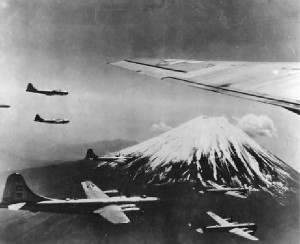Historical Background
Since I am not a historian, I will present only basic information and anecdotes from my own family who immigrated from Japan after the war ended. I hope these snippets will help the reader better understand the background for Tei’s memoir. Tei and her family traveled through Manchuria and Korea, both former colonies (1868 to 1947) of the Empire of Japan.
My great-grandfather, Masamichi Mizushima, served as a general in the Russo-Japanese War (1904-05) which gave the victorious Japanese significant influence over Manchuria and Korea. The Japanese military at the time was instrumental in expanding the Japanese Empire which extended over Manchuria, Korea, Taiwan and other parts of Asia. But like many members of the former samurai class, he grew disenchanted with the military, and encouraged his son, (my grandfather), Seizo Mizushima, to study and begin a career outside the military. Education, not family background was the key to success in the new Japan.
My grandfather Seizo was the first civilian in his family, and he built a successful dental practice in Tokyo during the prosperous, liberal Taisho Era (1912-26). Several members of my family went to the United States to study and seek their fortune during that time. Well-educated young men like Tei’s husband and Seizo’s son (my father), were also eager to learn from the West. My father’s uncle, a medical doctor, followed in the footsteps of other Japanese scientists who went to the United States, but a tragic car accident killed the ambitious doctor and his wife in Stockton, California. My relatives were dismayed to hear how poorly the Japanese and the Japanese-Americans were treated in the U.S. at that time.
The Great Kanto Earthquake of 1923 killed over 140,000 people in the Tokyo-Yokohama region, set back the economy, and increased social instability. My family survived the earthquake but remembered the anti-Korean sentiments—thousands of Koreans living in Tokyo were killed by panic-stricken Japanese who believed the Koreans had poisoned the drinking water. Conservative military leaders fanned such xenophobic feelings toward foreigners and the West, and they began silencing the liberals, imposing more restrictions and military control.
As my grandfather Seizo saw the growing militarism in Tokyo (In 1932 young fanatic military officers assassinated the Prime Minister), he was probably relieved when his sons took academic paths away from military school. The Kenpeitai (secret military police) forbid political meetings, censured student meetings, confiscated foreign books, and tortured dissenters, including my father’s friend who never recovered. The Kenpeitai were known to be brutal, particularly in Korea.
By the time Tei’s husband moved to Shinkyo City, Manchuria in 1943, the Japanese army had been at war with China for three years. Manchuria was an important source of raw materials for Japan, a resource-poor island nation. Although my father and many others in the educated community knew the U.S. would defeat Japan, the militarists, particularly the army, pushed for war, especially when the U.S. threatened Japan’s oil supplies. My father escaped widespread military conscription because he could do scientific research—such as on alternative fuels. Tei’s husband was also one of the educated who was not drafted.
Tei and her husband were part of a thriving economy in Manchuria. Over 850,000 Japanese lived in Korea and more than 2 million in China. In Shinkyo, where Tei and her family lived, the Japanese made up almost a quarter of the population. Modern factories, and institutions such as the Meteorological Institute where Tei’s husband worked were well established.
Tei begins her story in August 9, 1945 as they fled from the invading Soviets who declared war on Japan right after the U.S. dropped the atom bomb on Hiroshima. The Japanese military abandoned the civilians, leaving them completely vulnerable. More than 11,000 Japanese settlers died as they fled, about a third by committing suicide. Hundreds of thousands of Japanese men were captured, including Tei’s husband, and were sent to the Soviet forced labor camps, the infamous gulag.
After the end of the war, the hikiage began, the massive reverse migration of millions of Japanese soldiers, civilians, women, and children back to Japan. Most of Tei’s memoir takes place in what is now North Korea. Long before the Russo-Japanese War, Japanese merchants settled throughout Korea, seeking economic opportunity. Westerners were also in evidence on the peninsula. Tei saw a church and a hospital left behind by Protestant and Methodist missionaries who arrived in Korea from the United States and Canada beginning in the 1880’s. By the time Tei arrived, these missionaries were gone, replaced by the Japanese military. Tei’s group stays in the house next to a shinto shrine which was burned down, most likely by locals who resented the Japanese and their regulations: the abolishment of the Korean language in public schools and public functions, the pressure for Koreans to adopt Japanese names, use Japanese language, and bow to Japanese shinto shrines.
When Tei finally reached the shores of Japan in 1946, the situation was not much better—food shortages and the spread of the black market. My relatives experienced malnutrition and vividly remember the U.S. emergency food packets which saved many lives. It was no wonder that Tei thought her memoir might be her last testament. Her world in 1946 looked bleak and uncertain. Tei’s memoir is about a year that was the confluence of tremendous change—the end of the most devastating war the world had experienced, and the beginning of tremendous social change for Japan and the rest of the world. For her personally, her memoir documents the end of her innocence. Just as Pandora found when she opened the box, Tei found hunger, pain, suffering, cruelty and all the evils man could inflict on man. But also like Pandora, Tei finds one last spirit still remaining in the box—hope.
Nana V. Mizushima
March 2014
